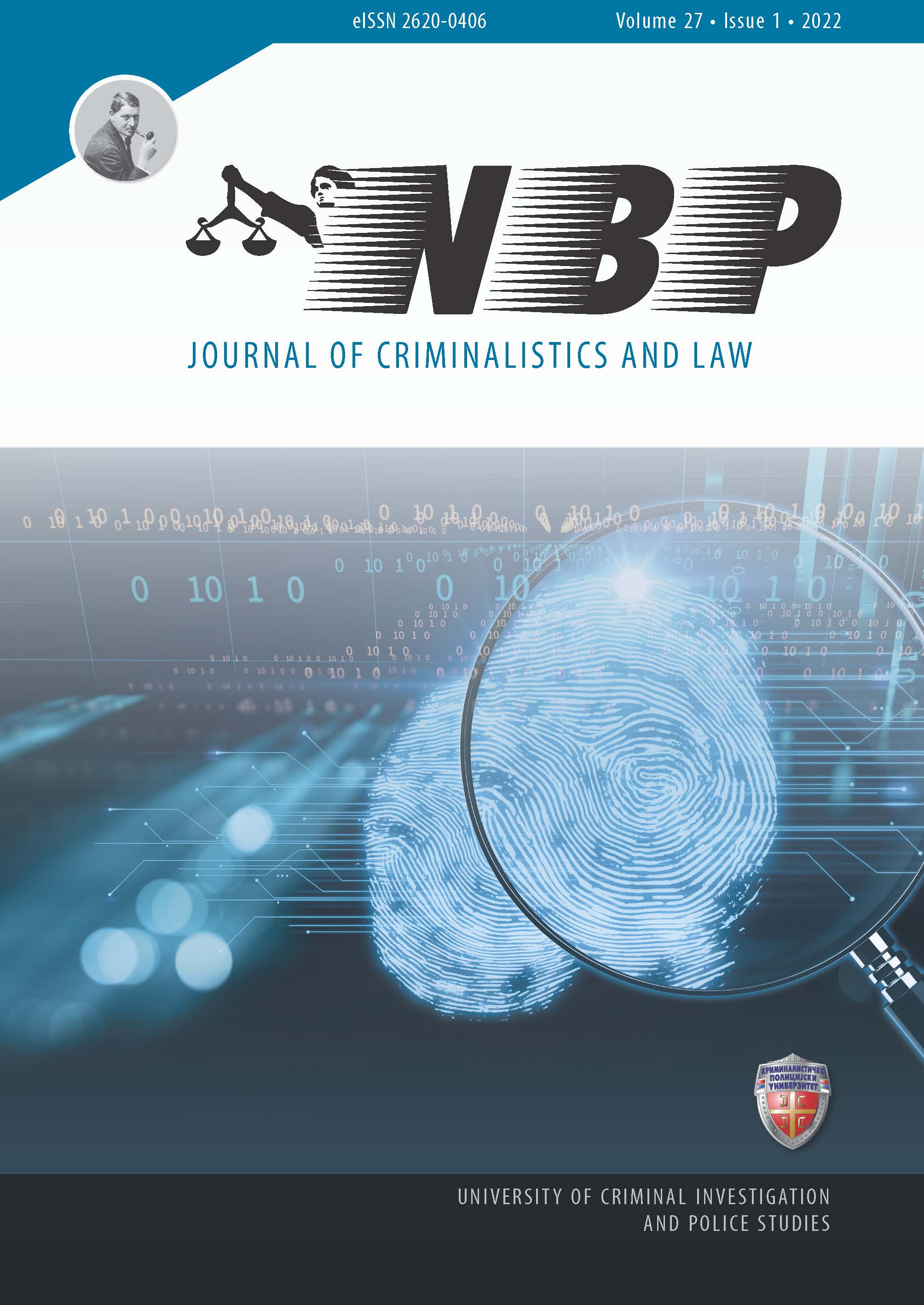Digitalni starosedeoci i onlajn učenje medju studentima KPU
Sažetak
Iako nisu novina u obrazovanju, onlajn nastava i učenje su se našli u centru pažnje sa početom pandemije virusa Covid-19. Pre 2019. ova vrsta obrazovanja bila je izbor za određene kategorije učenika, a nove tehnologije omogućile su njegovo širenje. Širenje onlajn učenja podstaklo je niz relevantnih istraživanja u skladu sa tim. Nova realnost stvorena pandemijom primorala je mnoge obrazovne institucije da se presele u sajber prostor, menjajući i percepciju nastavnika i učenika o obrazovanju. Cilj našeg kvalitativnog istraživanja bio je da ispitamo percepciju studenata Kriminalističko-policijskog univerziteta u Beogradu, Srbija, u pogledu predmeta Engleski jezik 2, ali i u pogledu onlajn obrazovanja uopšte. U radu će prvo biti navedene činjenice o onlajn učenju/učenju na daljinu, zatim ćemo dati prikaz prethodnih istraživanja o onlajn obrazovanju i na kraju rezultate našeg istraživanja.
Reference
Ananga, P. and Biney, I. K. (2017) Comparing face-to-face and online teaching and learning in higher education. MIER Journal of Educational Studies, Trends & Practices November 2017, Vol. 7, No. 2 pp. 165 - 179
Anderson, T. & Elloumi, F. (Eds) (2004). Theory and Practice of Online Learning. cde.athabascau.ca/online_book. Athabasca University. Retrieved from: 01 section (athabascau.ca), accessed: December 07, 2021
Big Blue Button web site BigBlueButton | Open Source Virtual Classroom Software, accessed: December 09, 2021
Casey, D. M. (2008). A Journey to Legitimacy: The Historical Development of Distance Education through Technology, TechTrends: Linking Research & Practice to Improve Learning Vol. 52 No. 2, pp. 45-51
Crotty, J. M. (2012). Distance Learning has been among us since 1892, You Big MOOC, Forbes Magazine, Nov 14, 2012,11:46am EST. Retrieved from: Distance Learning Has Been Around Since 1892, You Big MOOC (forbes.com), accessed: December 08, 2021
Humaira A., Mahmood, M. (2018). Study of the Impact of Online Education on Student’s learning at University Level in Pakistan. Online Submission, International Journal of Distance Education and E-Learning (IJDEEL) v3 n2 2018. Retrieved from: ERIC - ED597924 - Study of the Impact of Online Education on Students' Learning at University Level in Pakistan, Online Submission, 2018, accessed on: December 09, 2021
Le Cunff, AL. (n. d.). Distance learning, e-learning, online learning, or virtual learning?. Retrieved from: Distance learning, e-learning, online learning, or virtual learning? (nesslabs.com). Accessed: November 29, 2021
Meyer, K.A. and McNeal, L. (2011). How online faculty improve student learning productivity. Journal of Asynchronous Learning Networks, Volume 15: Issue 3, pp. 37-53. Retrieved from: Best Practices for Achieving Greater Productivity through Online Learning: (ed.gov), accessed: December 10, 2021.
Mishra, L., Gupta, T., Shree, A. (2020). Online teaching-learning in higher education during lockdown period of COVID-19 pandemic. International Journal of Educational Research Open 1 (2020) 100012. Retrieved from: www.elsevier.com/locate/ijedro. Accessed on November 25, 2021
Nwankwo, A. A. (2015). Students’ Learning Experiences and Perceptions of Online Course Content and Interactions. Doctoral dissertation. Walden University. Available at: Students' Learning Experiences and Perceptions of Online Course Content and Interactions (waldenu.edu). Accessed: 10. 12. 2021.
Prensky, M. (2001). Digital Natives, Digital Immigrants Part 1. On the Horizon. 9 (5): 1–6. doi:10.1108/10748120110424816. ISSN 1074-8121
Soumik, S. (2020). A Brief History of Online Education. May 16, 2020. Retrieved from: A Brief History of Online Education | Adamas University, accessed: December 08, 2021
Sun, A., & Chen, X. (2016). Online education and its effective practice: A research review. Journal of Information Technology Education: Research, 15, 157-190. Retrieved from: http://www.informingscience.org/Publications/3502
Swan, K. (2003). Learning effectiveness: what the research tells us. In J. Bourne & J. C. Moore (Eds) Elements of Quality Online Education, Practice and Direction. Needham, MA: Sloan Center for Online Education, 13-45
Swan, K. & Shea. P. (2005). The development of virtual learning communities. In S. R. Hiltz & R. Goldman, Asynchronous Learning Networks: The Research Frontier. New York: Hampton Press, 239-260
Swan, K., Garrison, D. R. & Richardson, J.C. (2009). A constructivist approach to online learning: the Community of Inquiry framework. In Payne, C. R. (Ed.) Information Technology and Constructivism in Higher Education: Progressive Learning Frameworks. Hershey, PA: IGI Global, pp. 43-57
Thackaberry (n.d.). A Brief History of Distance Learning. Retreived from: A Brief History of Distance Learning – eLearning and the Innovation of the Academy (edusasha.com). Accessed: November 29, 2021
Zakaryia, A., Khaled, M., Omar, A. M. (2021). Faculty’s and Students’ Perceptions of Online Learning During COVID-19, Frontiers in Education vol. 6. Retrieved from: https://www.frontiersin.org/article/10.3389/feduc.2021.638470, DOI=10.3389/feduc.2021.638470, ISSN=2504-284X

